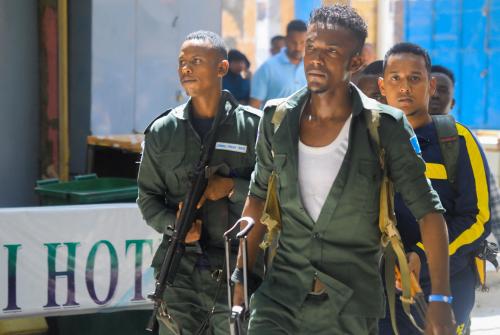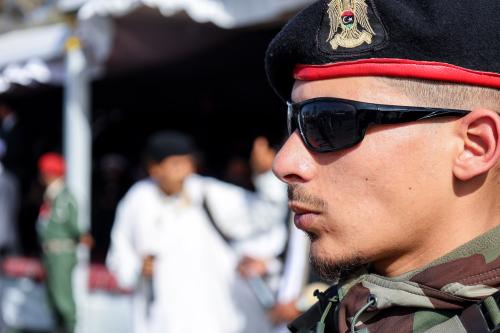Killing terrorist leaders is difficult, is often ineffective, and can easily backfire. Yet it is one of the United States’ few options for managing the threat posed by al Qaeda from its base in tribal Pakistan. By some accounts, U.S. drone activity in Pakistan has killed dozens of lower-ranking and at least 10 mid- and high-ranking leaders from al Qaeda and the Taliban.
Critics correctly find many problems with this program, most of all the number of civilian casualties the strikes have incurred. Sourcing on civilian deaths is weak and the numbers are often exaggerated, but more than 600 civilians are likely to have died from the attacks. That number suggests that for every militant killed, 10 or so civilians also died.
To reduce casualties, superb intelligence is necessary. Operators must know not only where the terrorists are, but also who is with them and who might be within the blast radius. This level of surveillance may often be lacking, and terrorists’ deliberate use of children and other civilians as shields make civilian deaths even more likely.
Beyond the humanitarian tragedy incurred, civilian deaths create dangerous political problems. Pakistan’s new democratic government is already unpopular for its corruption, favoritism, and poor governance. U.S. strikes that take a civilian toll are a further blow to its legitimacy — and to U.S. efforts to build goodwill there. As counterterrorism expert David Kilcullen put it, “When we intervene in people’s countries to chase small cells of bad guys, we end up alienating the whole country and turning them against us.”
And even when they work, killings are a poor second to arrests. Dead men tell no tales and thus are no help in anticipating the next attack or informing us about broader terrorist activities. So in any country with a functioning government, it is better to work with that government to seize the terrorist than to kill him outright. Arresting al Qaeda personnel in remote parts of Pakistan, however, is almost impossible today; the Pakistani government does not control many of the areas where al Qaeda is based, and a raid to seize terrorists there would probably end in the militants escaping and U.S. and allied casualties in the attempt.
When arrests are impossible, what results is a terrorist haven of the sort present along the Afghanistan-Pakistan border today. Free from the threat of apprehension, terrorists have a space in which to plot, organize, train, and relax — an extremely dangerous prospect. In such a haven, terrorist leaders can recruit hundreds or even thousands of potential fighters and, more importantly, organize them into a dangerous network. They can transform idealistic but incompetent volunteers into a lethal legion of fighters. They can also plan long-term global operations — terrorism “spectaculars” like the September 11 attacks, which remain one of al Qaeda’s goals.
Killing terrorist operatives is one way to dismantle these havens. Plans are disrupted when individuals die or are wounded, as new people must be recruited and less experienced leaders take over day-to-day operations. Perhaps most importantly, organizations fearing a strike must devote increased attention to their own security because any time they communicate with other cells or issue propaganda, they may be exposing themselves to a targeted attack.
Given the humanitarian and political risks, each strike needs to be carefully weighed, with the value of the target and the potential for innocent deaths factored into the equation. In addition, the broader political consequences must be evaluated; the same death toll can have vastly different political consequences depending on the context. But equally important is the risk of not striking — and inadvertently allowing al Qaeda leaders free reign to plot terrorist mayhem.
We must not pretend the killings are anything but a flawed short-term expedient that at best reduces the al Qaeda threat — but by no means eliminates it. Even as U.S. strikes have increased, Pakistan has suffered staggering levels of terrorism as groups with few or limited links to al Qaeda have joined the fray. Al Qaeda itself can also still carry out attacks, including ones outside Pakistan in Europe and even the United States. Thanks to the drone strikes, they are just harder to pull off. The real answer to halting al Qaeda’s activity in Pakistan will be the long-term support of Pakistan’s counterinsurgency efforts. While this process unfolds, targeted killings are one of America’s few options left.



Commentary
Op-edDo Targeted Killings Work?
July 14, 2009